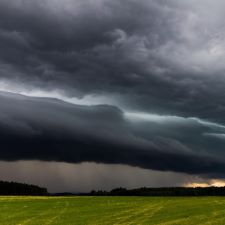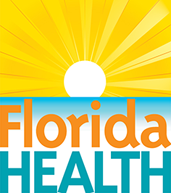It's a New Day in Public Health.
The Florida Department of Health works to protect, promote, and improve the health of all people in Florida through integrated state, county, and community efforts.
Florida Thunderstorms: Safety Tips to Be Prepared
Contact: Florida Health
- 850-245-4444
- health@flhealth.gov
-
Mailing Address
Florida Health
4052 Bald Cypress Way
Tallahassee, FL 32399
Braving Florida's Stormy Skies: Thunderstorm Safety Tips
Florida is known for its frequent and dramatic thunderstorms. While these storms can be a welcome break from the heat, they also bring hazards such as lightning, heavy rain, hail, and the potential for flash flooding. Understanding thunderstorms and how to stay safe during them is key for residents and visitors alike.

What Are Thunderstorms?
Thunderstorms form when warm, moist air rises rapidly, creating towering cumulonimbus clouds. These clouds produce lightning, thunder, and often heavy rainfall. In Florida, the unique climate and geography contribute to frequent afternoon thunderstorms, especially during the summer months.
Remember the last time you were caught in a sudden Florida thunderstorm? The sky darkened, the air cooled, and then—boom! Thunder roared, and you knew you had to take cover.
- Hazards Associated with Thunderstorms
- Safety Tips for Thunderstorms
- Additional Trusted Resources
- Lightning: Lightning is one of the most dangerous aspects of thunderstorms. It can strike without warning, causing injury or, in rare cases, fatalities. Learn more about Lightning Safety.
- Heavy Rainfall and Flash Flooding: Intense downpours can lead to flash flooding, particularly in low-lying or urban areas where water drainage may be limited. Learn more at NOAA’s Thunderstorm Safety.
- Hail: Thunderstorms can produce hail, which may cause property damage, injury, or disrupt outdoor activities.
- Wind and Tornadoes: Occasionally, thunderstorms spawn brief tornadoes or produce strong, gusty winds that can cause localized damage. Visit our Tornado Safety page for more detailed information about tornadoes in Florida
- Seek Shelter: When thunder roars, go indoors immediately. Avoid open fields, isolated trees, or bodies of water.
- Stay Away from Windows: Lightning can strike buildings, so keep a safe distance from windows during a storm.
- Monitor Local Weather Alerts: Keep up to date with real-time information from trusted sources like the National Weather Service or local emergency management.
- Avoid Electronic Devices: Unplug appliances and avoid using wired devices to reduce the risk of electrical surges.
- National Weather Service Thunderstorm Safety - Find essential safety tips and guidelines for thunderstorms on the National Weather Service’s Thunderstorm Safety page.
- NOAA Weather Resources - Access forecasts, research, and safety updates from on NOAA’s website
- Local Emergency Management: Access county-specific emergency planning and preparedness resources on FloridaDisaster.org.
Weather the Storm with Confidence
Florida’s thunderstorms are a natural part of the state’s climate, offering both beauty and potential hazards. By understanding how thunderstorms form and the risks they pose, you can take simple precautions to protect yourself and your loved ones. Stay informed, follow local guidance, and be prepared to seek shelter when needed.
By understanding the hazards of Florida thunderstorms and following local safety guidelines, you can protect yourself and ride out each storm with confidence.
Disclaimer: The links and content provided on this page are for informational purposes and your convenience. The Florida Department of Health (DOH) does not endorse, approve, or guarantee the products, services, or opinions offered on external websites. Furthermore, the DOH is not responsible for the accuracy, content, or availability of these external sites. For questions or concerns, please contact the external site directly.



Connect with DOH